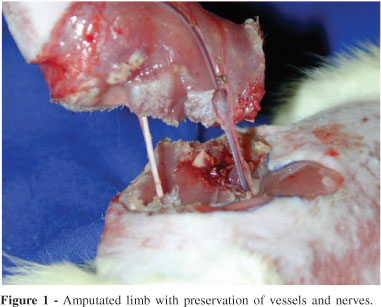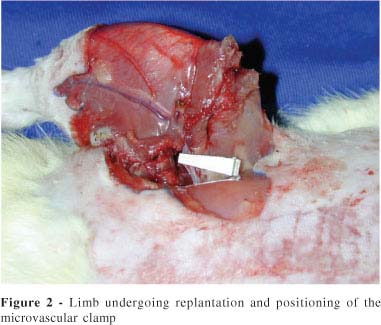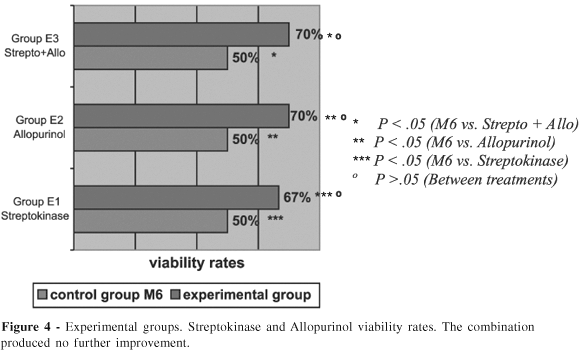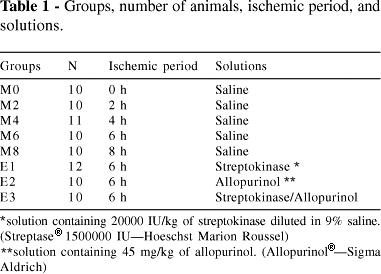Prolonged tissue ischemia leads to changes in microcirculation and production of oxygen free radicals. The event eventually responsible for tissue death is the no-reflow phenomenon and its management is a challenge for the surgeon dealing with replantation or transplantation. We introduce a model of warm ischemia and reperfusion of the lower limb of rats with which we studied the effect of allopurinol and streptokinase. METHOD: Section of the lower limb with preservation of vessels and nerves was performed in 110 rats. Femoral vessels clamped for periods of 0, 2, 4, 6, and 8 hours of ischemia were allowed to reperfuse (groups M0, M2, M4, M6, and M8 respectively). Other groups, E1, E2, and E3, received streptokinase, allopurinol, or a combination of the two drugs after 6 hours of ischemia. RESULTS: Viability rates of the ischemic limbs after 7 days were 100% (M0), 80% (M2), 63.6% (M4), 50% (M6), and 20% (M8). In the experimental groups, E1, E2, and E3, viability rates were 67% (E1), 70% (E2), and 70% (E3). Groups M0, M2, M4, M6, and M8 differed among themselves except for groups M4 and M6. Group E1 had a higher rate of limb viability than M6 (control group) but not than M4. Groups E1, E2 and E3 had higher rates of limb viability than M6 but not than M2 or M4. DISCUSSION: The results suggest that increased viability of limbs after 6 hours of ischemia occurs when allopurinol or streptokinase is used. The combination of the two drugs does not appear to produce any additional effect.
Warm ischemia; No-reflow phenomenon; Free radicals; Rat limb





